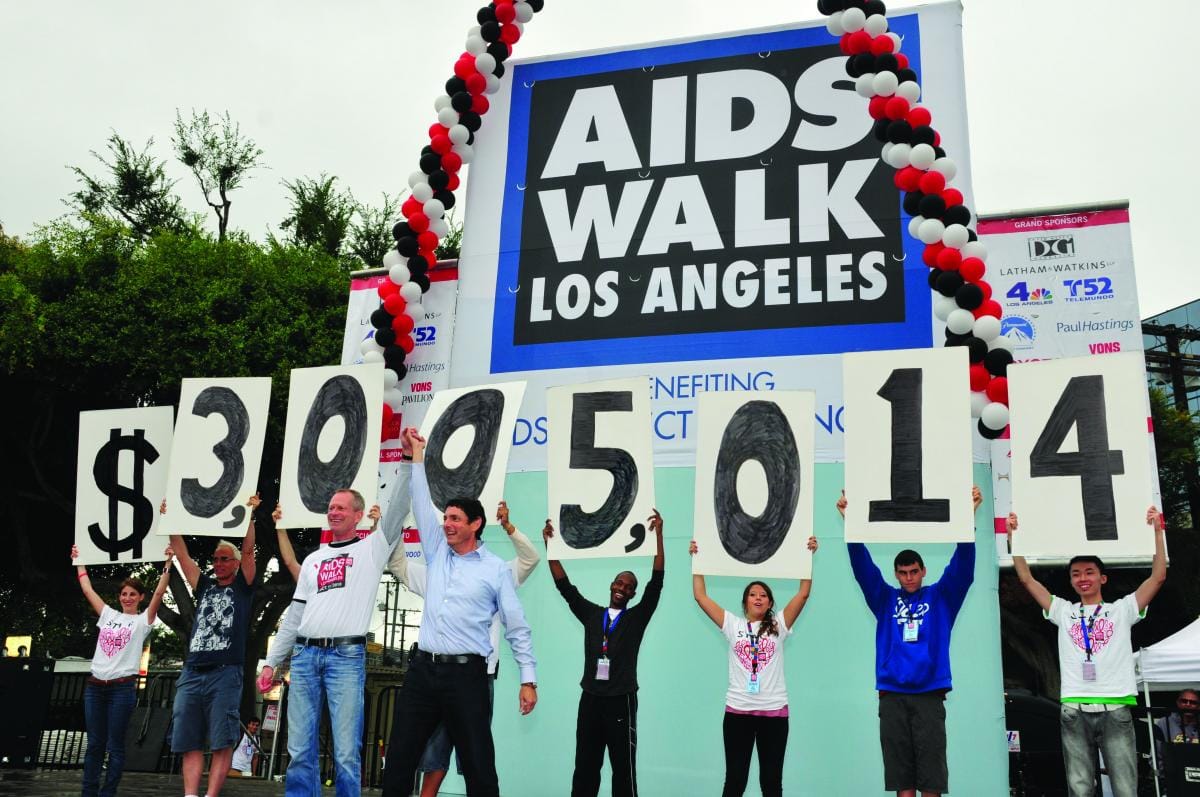
OLYMPIC BLVD — This Sunday, hundreds of members of the New Roads School community will join thousands of other Angelenos in a 10-kilometer walk meant to raise money and awareness for a nonprofit dedicated to caring for those with HIV and AIDS.
The school has sent a contingent to AIDS Walk Los Angeles since 2001, raising thousands of dollars to support AIDS Project Los Angeles, which provides prevention education, bilingual services and leadership on HIV/AIDS policy.
Senior Justyce Martirosian has never missed a year.
"It's something I have to do," Martirosian said. "It brings the community together. … Your voice is heard, you get to learn things and it's just one of those experiences that changes every time."
In a school like New Roads, which trumpets its message of social justice at every opportunity, participation in events like AIDS Walk Los Angeles is something you do.
Jeremy Arnold, a senior, isn't quite sure how he's avoided it so far, but he and his fellow student government leader Martirosian have been working hard to make the walk a success.
"We started organizing right off the bat when school started," Arnold said. "What's the number one thing on our agenda? AIDS Walk."
That fact is evident in subtle and not-so-subtle ways all across the campus.
Red paint in windows and on buildings asks "What's Oct. 14?" or simply proclaims it "AIDS Walk." Students conduct informal fundraisers every day, twice a day, hitting up their peers for money left over after a visit to the mobile food truck that stops by campus or other purchases.
Perhaps it makes sense in a school that devotes a once-a-week class to social justice issues, and where students take over Big Blue Buses on trips to occupy the UCLA campus to protest tuition hikes on 48-hours' notice.
But New Roads, a small private school that provides scholarships to half of its students, has a much more personal connection to the event than simple tradition.
In 2006, a young woman named Andraya Hunter graduated from New Roads in the blue gown she'd chosen for the event. Three weeks later, she died of complications related to AIDS.
Hunter was born with the disease. She was forced to leave her elementary school after it became public that she was HIV-positive, and until she reached high school Hunter kept knowledge of her illness under wraps.
New Roads was a different experience for her, said Mario Johnson, director of Volunteer Services at New Roads who knew Hunter while she was at the school.
"She was such an open individual, she talked about it all the time. I'd never met a young person like her," Johnson said.
Hunter helped "out" the topic, connecting it to things in her classwork. A biology teacher once told Johnson that Hunter had connected HIV/AIDS to a lesson on cells.
"He wasn't prepared for her to take immediate ownership of that, but she was so comfortable with it that it just became part of the lesson," Johnson said.
Hunter died in 2006, but her memory lived on at the school, which continues to participate in AIDS Walk Los Angeles in her memory.
Research funded through organizations like AIDS Project Los Angeles — the beneficiary of the event — has led to major breakthroughs for people like Hunter.
Transmission of the disease from mother to child has dropped from 25 percent to less than 1 percent through the use of drug cocktails for the mother and a six-week course of the drug AZT for the infant, said Dr. Lynne Mofenson, with the National Institute for Child Health and Human Development.
For those that do become infected, drugs costing roughly $1,200 per year by some studies can keep youth alive into their 20s, a big step up from just 20 years ago when between 25 and 30 percent of infants with HIV died before they turned 1, Mofenson said.
Although mother-to-child transmission rates have been cut drastically, young people are still manifesting the disease at high rates.
According to the Centers for Disease Control and Prevention, young people between the ages of 13 and 29 accounted for 39 percent of all the new HIV infections in the United States.
Young men who have sex with men, especially those of minority races and ethnicities, are at a greater risk.
The CDC estimates that there are 26,400 people between 13 and 24 living with HIV. Of that number, nearly 60 percent are unaware.
"Right now, AIDS has essentially become a problem that's specifically related to social class and lack of education," Johnson said, which is a big reason that the New Roads community felt it was important to keep the disease as part of an ongoing school conversation.
The goal isn't to scare kids, but to engage them in conversation and make them aware of the facts of the disease so that they do not fall victim to it.
"You shouldn't be motivated by fear, but you should know that there are consequences to your interactions," he said.
If you want to support Team New Roads, go to www.aidswalk.net/losangeles and click on the "Go to Teams Page" link.
ashley@www.smdp.com

